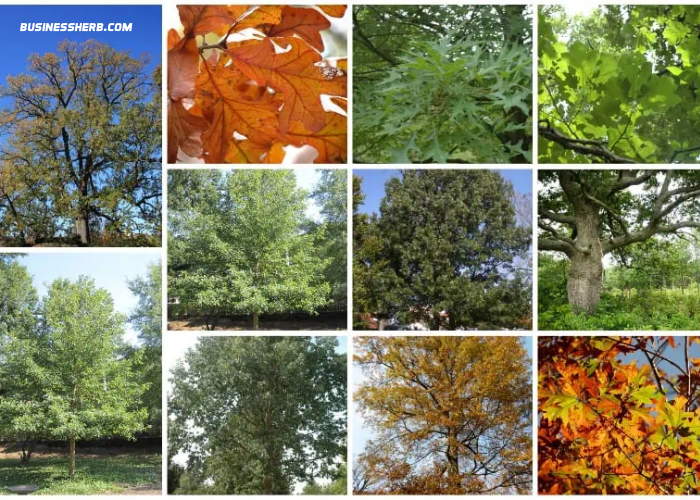Nestled within the heart of the United States, the state of Tennessee boasts a diverse landscape, from the rolling hills of the Appalachian Mountains to the vibrant music scenes of cities like Nashville and Memphis. Among its natural treasures, the majestic oak trees stand as timeless sentinels, bearing witness to centuries of history and serving as a testament to the state’s rich biodiversity. This article delves into the remarkable world of oak trees in Tennessee, exploring their ecological significance, cultural importance, and the efforts to preserve and protect these towering giants.
Ecological Significance
Oak trees are ecological powerhouses, and those found in Tennessee are no exception. The state’s varied geography and climate support a wide array of oak species, contributing to a complex web of life. Oaks provide essential habitats for countless species, from insects to birds to mammals.
Their sturdy branches offer nesting sites for various bird species, including the Eastern Bluebird and Northern Flicker. Additionally, oak trees serve as vital food sources for native wildlife, as their acorns are a staple in the diets of squirrels, deer, and wild turkeys.
Tennessee’s oak forests play a crucial role in maintaining soil health and preventing erosion. The trees’ deep-reaching roots help stabilize the soil, reducing the risk of landslides and maintaining water quality in nearby streams and rivers.
Furthermore, oak-dominated forests contribute to carbon sequestration, aiding in the fight against climate change by absorbing and storing significant amounts of carbon dioxide from the atmosphere.
Oak Diversity in Tennessee
Tennessee is home to a diverse array of oak species, each with its own unique characteristics and adaptations. Among the most prominent oak species in the state are the White Oak (Quercus alba) and the Red Oak (Quercus rubra).
The White Oak, known for its strong and durable wood, is a common sight in Tennessee’s woodlands. Its leaves, with their distinctive rounded lobes, turn a rich reddish-brown in the fall, adding a warm hue to the landscape.
The Red Oak, on the other hand, is recognized by its pointed, bristle-tipped leaves and vibrant red foliage during the autumn months. This species often dominates the upland forests of Tennessee, where its acorns provide sustenance to a wide range of wildlife.
Cultural Significance
Beyond their ecological importance, oak trees hold deep cultural significance in Tennessee. Native American communities revered these trees for their strength and longevity, often using their wood for crafting tools, shelter, and ceremonial objects. The Cherokee people, in particular, held the oak tree in high esteem, viewing it as a symbol of strength and endurance.
As European settlers arrived in Tennessee, oak wood became a vital resource for building homes, barns, and furniture. The resilience and durability of oak wood ensured its popularity for constructing structures that could withstand the test of time. Today, oak remains a favored material for crafting fine furniture and cabinetry, connecting modern artisans to the state’s historical legacy.
Challenges and Conservation
Despite their resilience, oak trees in Tennessee face several challenges that threaten their survival. Urbanization, invasive species, and climate change all pose significant risks to these majestic trees. As cities expand and landscapes change, the habitats of oak trees are fragmented, making it difficult for wildlife to find suitable homes and food sources.
Invasive species like the Gypsy Moth and the Hemlock Woolly Adelgid can devastate oak populations by preying on the trees or outcompeting native species. Climate change introduces new challenges, including more frequent and severe droughts, which can stress oak trees and make them more susceptible to diseases and pests.
To address these threats, conservation efforts have taken center stage. Organizations like the Tennessee Department of Environment and Conservation work to protect and restore oak habitats through initiatives such as reforestation, invasive species management, and public education campaigns. These efforts aim to ensure that future generations can continue to appreciate the beauty and importance of oak trees in the state.
Preserving the Legacy
Preserving Tennessee’s oak trees requires a multifaceted approach that involves not only governmental agencies but also the engagement of local communities. Individuals can contribute to conservation by planting native oak species in their yards, supporting local conservation organizations, and participating in habitat restoration projects.
Educational initiatives are also crucial in fostering a deeper understanding of the role oak trees play in the state’s ecosystems. Schools, nature centers, and community groups can offer programs that highlight the ecological and cultural significance of oak trees, inspiring a sense of stewardship among residents and visitors alike.
Conclusion
Oak trees stand as enduring symbols of strength, resilience, and interconnectedness in the diverse landscapes of Tennessee. From their essential ecological roles to their cultural significance and historical legacy, these trees enrich the state in numerous ways.
By recognizing the challenges they face and taking active steps to conserve and protect them, Tennesseans ensure that the legacy of these majestic oaks continues to thrive for generations to come.

